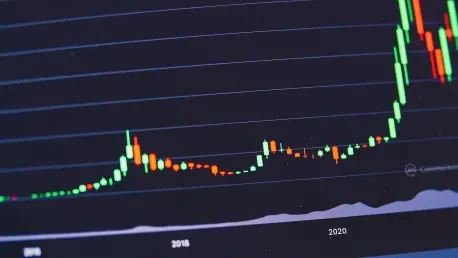In recent developments on the global trading stage, signs of progress in negotiations between major economic powers have sparked optimism. The Australian and New Zealand dollars stand to gain, buoyed by easing fears over potential tariff escalation. Reports indicate that trade talks between the United States and the European Union have produced a framework. A possible trade agreement could introduce a 15 percent tariff on EU goods, avoiding a more severe 30 percent tariff that was once on the table for implementation last year. Supportive comments from U.S. Treasury Secretary Scott Bessent have reinforced this optimism. These remarks, paired with staunch economic data, suggest that an interest rate cut by the Fed is unlikely, given the strong retail sales and job market in the United States.
Antipodean Currency Surge
Factors Influencing the Australian Dollar
The Australian dollar witnessed a notable spike in its value, marking several highs against major global currencies such as the yen, U.S. dollar, and Canadian dollar. As it benefits from this trade optimism, analysts suggest that if its momentum persists, it may challenge existing resistance levels. Insights into its appreciation stem not only from international trade developments but also from positive domestic economic indicators. Australia’s manufacturing and services sectors posted encouraging Purchasing Managers’ Index (PMI) readings in recent months, fueling confidence in the country’s economic growth trajectory.
Across the spectrum, this uplift is mirrored by improved sentiment in investment circles, further boosting the dollar’s standing. Portfolio managers and traders alike are recalibrating their strategies, embedding the positive sentiment surrounding the Australian economy. Consequently, the currency’s enhanced attractiveness could be pivotal for its continued upward trend. These multifaceted dynamics underpin the robustness of the Australian dollar’s positioning in the contemporary global market, highlighting its resilience in the face of past challenges.
New Zealand Dollar’s Resilience
The New Zealand dollar has also exhibited resilience amid the trade optimism wave, climbing to its highest point in over two weeks against the American dollar. The kiwi’s strength has been conspicuous in its performance against both the yen and the euro. This rise is in line with a broader uplift seen in other antipodean currencies, fueled by strategic economic engagements and favorable domestic data. One significant factor boosting the New Zealand dollar’s appeal is the positive sentiment regarding the country’s agricultural exports, which remain a cornerstone of its economy.
Market participants are showing renewed interest in the kiwi, influenced by an upswing in economic data and an optimistic outlook for exports. The strength of New Zealand’s trade relationships with Asian markets has been instrumental in supporting its currency. Along with this, central bank actions directed toward stabilizing and fostering economic growth have added to the positive atmosphere. These contributing elements suggest that the New Zealand dollar may sustain its rising trajectory, even as global market conditions evolve.
Global Context and Economic Indicators
The Impact of Broader Market Dynamics
The current enthusiasm surrounding antipodean currencies cannot be viewed in isolation, as global economic indicators play an influential role. Bright spots in the Eurozone and U.K. PMI reports provide a context for improved market sentiment across several continents. Furthermore, Canada’s retail and manufacturing sales figures, along with the U.S. jobless claims data, paint a comprehensive picture of the world’s economic landscape. These indicators collectively serve as barometers for investor confidence and economic activity levels, often influencing currency valuations in a globally interconnected environment.
The recent declarations by Europe’s central banking authorities have generated interest, with the European Central Bank (ECB) expected to maintain a steady deposit rate. This decision reflects broader economic stability and strategic planning amidst existing uncertainties. The monetary policy pronouncements and press conferences by key financial leaders, including ECB President Christine Lagarde, are pivotal. They provide insights into anticipated monetary directions and adjustments, which could further inform currency trends and economic strategies on a macroeconomic scale.
Pivotal Events and Policymaking
Looking ahead, various significant events and policy decisions will shape the financial landscape. The continued discourse around interest rates, trade policy developments, and economic growth forecasts set the stage for future volatility in currency markets. Observers are keenly watching the U.S. Federal Reserve’s policy trajectory, as global growth prospects hinge on its decisions. Balancing domestic economic strength against international trade relations, the monetary authorities’ next steps could trigger further currency movements.
Market stakeholders are prepared for any outcomes, ever alert to shifts that could redefine trade relationships or alter monetary policies. As international trade becomes inherently complex, currency valuations increasingly depend on a combination of government negotiations, economic reports, and fiscal policies. Such influences ensure a dynamic market environment, continually reshaping the landscape in response to evolving economic realities and policy decisions.
Synthesis of Economic Optimism
The Australian dollar has recently shown a significant increase in value, reaching new heights against major currencies such as the yen, U.S. dollar, and Canadian dollar. This surge is fueled by optimism in trade, and analysts are noting that if this momentum continues, the currency might soon test current resistance levels. The appreciation isn’t solely based on international trade happenings; it’s also supported by strong domestic economic signals. Recent months have shown positive results in Australia’s manufacturing and services sectors, evidenced by favorable Purchasing Managers’ Index (PMI) readings, boosting confidence in the nation’s economic growth prospects.
This positive shift is also reflected in the upbeat sentiment among investors, further strengthening the Australian dollar. As portfolio managers and traders adjust their strategies to embrace this optimism surrounding the Australian economy, the currency’s attractiveness is underscored as crucial for its continued ascent. These factors contribute to the strong position of the Australian dollar in the global market, showcasing its resilience despite previous challenges.









